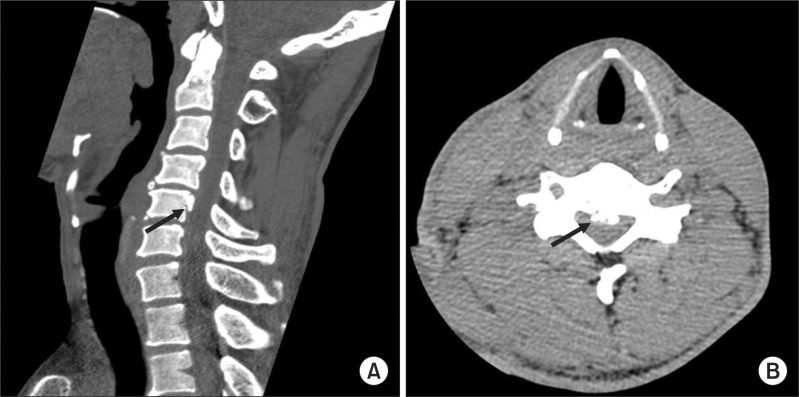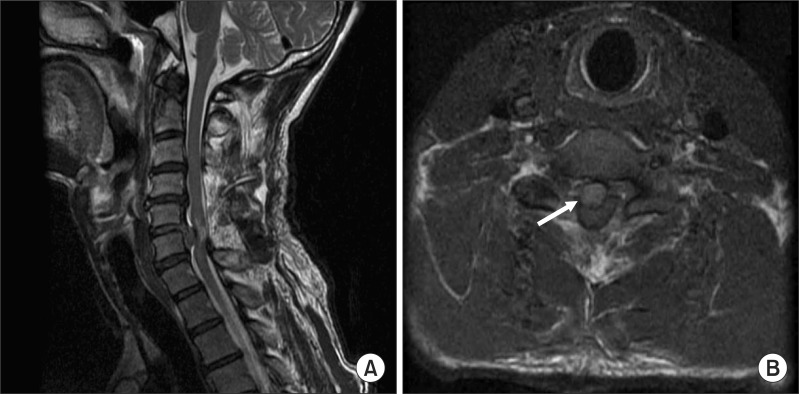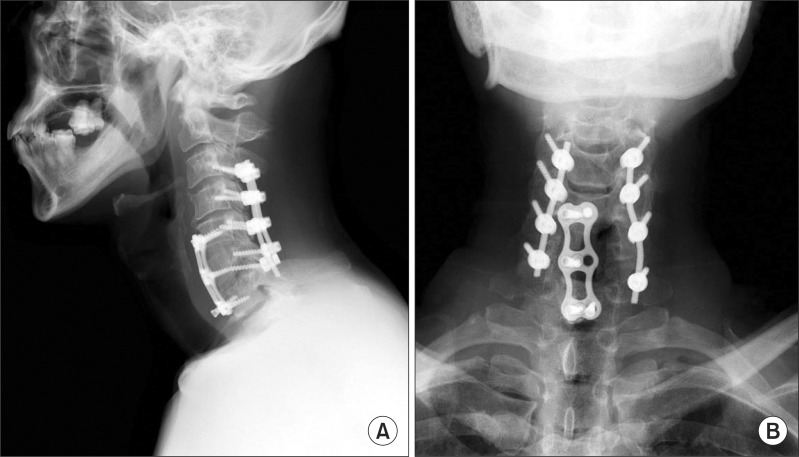Ann Rehabil Med.
2012 Oct;36(5):708-712.
Spinal Cord Injury Incurred by Neck Massage
- Affiliations
-
- 1Department of Rehabilitation Medicine, College of Medicine, The Catholic University of Korea, Suwon 442-723, Korea. mdhong112@gmail.com
Abstract
- Massage is generally accepted as a safe and a widely used modality for various conditions, such as pain, lymphedema, and facial palsy. However, several complications, some with devastating results, have been reported. We introduce a case of a 43-year-old man who suffered from tetraplegia after a neck massage. Imaging studies revealed compressive myelopathy at the C6 level, ossification of the posterior longitudinal ligament (OPLL), and a herniated nucleus pulposus (HNP) at the C5-6 level. After 3 years of rehabilitation, his motor power improved, and he is able to walk and drive with adaptation. OPLL is a well-known predisposing factor for myelopathy in minor trauma, and it increases the risk of HNP, when it is associated with the degenerative disc. Our case emphasizes the need for additional caution in applying manipulation, including massage, in patients with OPLL; patients who are relatively young (i.e., in the fifth decade of life) are not immune to minor trauma.
MeSH Terms
Figure
Reference
-
1. Branco F, Cardenas DD, Svircev JN. Spinal cord injury: a comprehensive review. Phys Med Rehabil Clin N Am. 2007; 18:651–679. PMID: 17967359.
Article2. Katoh S, Ikata T, Hirai N, Okada Y, Nakauchi K. Influence of minor trauma to the neck on the neurological outcome in patients with ossification of the posterior longitudinal ligament (OPLL) of the cervical spine. Paraplegia. 1995; 33:330–333. PMID: 7644259.
Article3. Vickers A, Zollman C. ABC of complementary medicine. Massage therapies. BMJ. 1999; 319:1254–1257. PMID: 10550095.
Article4. Tsao JC. Effectiveness of massage therapy for chronic, non-malignant pain: a review. Evid Based Complement Alternat Med. 2007; 4:165–179. PMID: 17549233.
Article5. Ernst E. The safety of massage therapy. Rheumatology. 2003; 42:1101–1106. PMID: 12777645.
Article6. Knapp ME. Kottke FJ, Lehmann JF, editors. Massage. Krusen's handbook of physical medicine and rehabilitation. 1990. 4th ed. Philadelphia: Saunders;p. 435.7. Seo JG, Kim JY, Choi HJ. Acute myelopathy due to ruptured HNP in cervical OPLL patient. J Korean Soc Spine Surg. 2006; 13:323–326.8. Hsieh JH, Wu CT, Lee ST. Cervical intradural disc herniation after spinal manipulation therapy in a patient with ossification of posterior longitudinal ligament: a case report and review of the literature. Spine. 2010; 35:E149–E151. PMID: 20190620.
- Full Text Links
- Actions
-
Cited
- CITED
-
- Close
- Share
- Similar articles
-
- Fracture of Femur Neck with Heterotopic Ossification in Spinal Cord Injured Patient
- Paraplegia Following Spinal Cord Contusion from an Indirect Gunshot Injury
- Penetrating Neck Trauma: A Case of Spinal Cord Injury by Embedded Scissor
- Delayed Spinal Cord Injury Following Low Voltage Electrical Accident
- Spinal Cord Injury Followign Electrical Accidents : Case Reports




